How Milton Keynes became UK's 'skate capital'
- Published
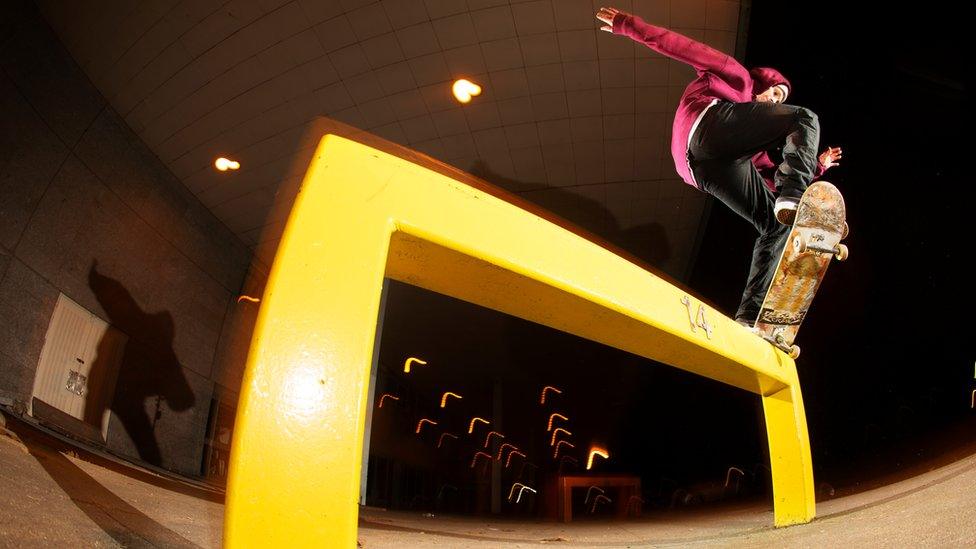
Leo Sharp's work is among the photography which will be on show at MK Skate, including this shot of "bona-fide MK legend" Sean Smith from 2014
When skateboarding began to kickflip its way into youth culture in the 1980s, its unlikely UK hotbed was a concrete-clad new town in Buckinghamshire. But the smooth surfaces and urban obstacles of Milton Keynes have proved fertile ground for generations of boarders - a legacy celebrated by a new arts programme this autumn.
MK Skate includes photographic exhibitions, street art displays, demonstrations and guided tours around its most significant skateboarding sites.
Its organisers want to demonstrate how Milton Keynes has earned itself the title of the UK's skate capital, and switch up negative perceptions of the town.
The hope is to get people to see skateboarding a little differently, and appreciate its "artistry and self-expression", said Nathan Lindsell, one of the organisers.
The programme and exhibition has been funded by a £97,800 National Lottery grant and Milton Keynes Council.
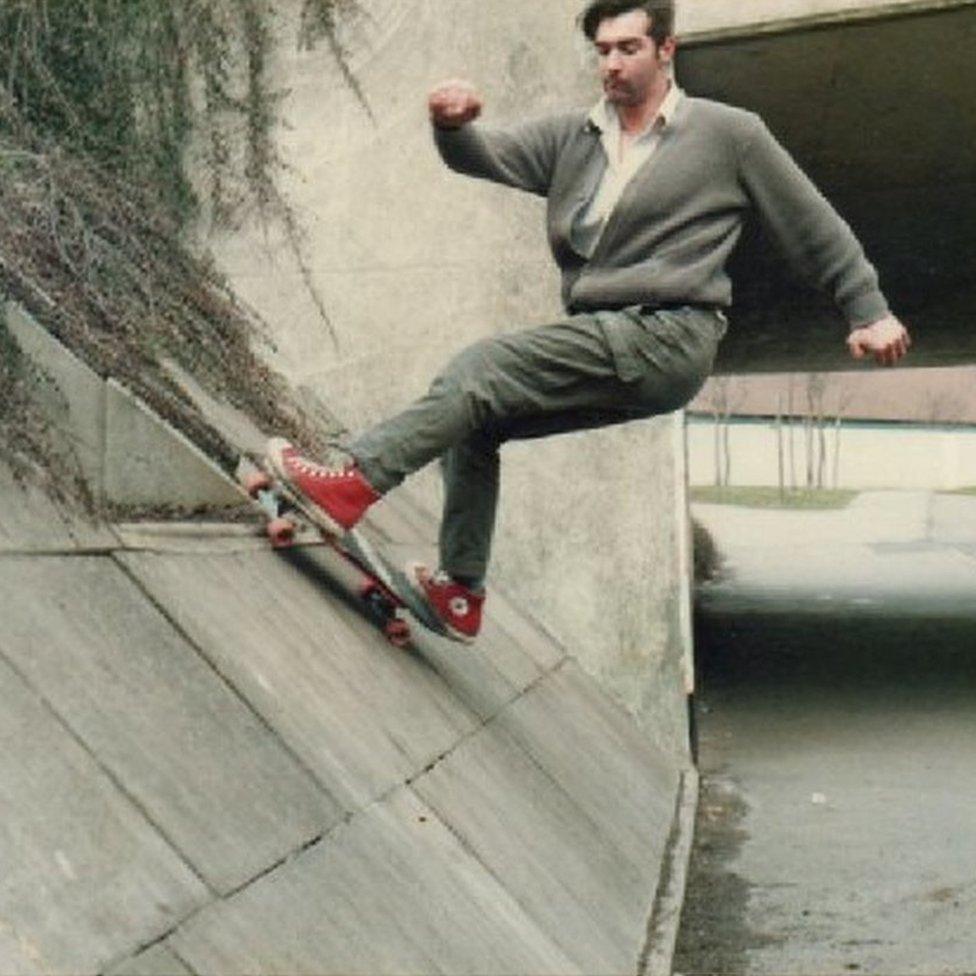
From the early days, Milton Keynes had the ideal urban conditions for the sport to thrive and skateboarders to explore their creativity, as this photo from the 1980s shows
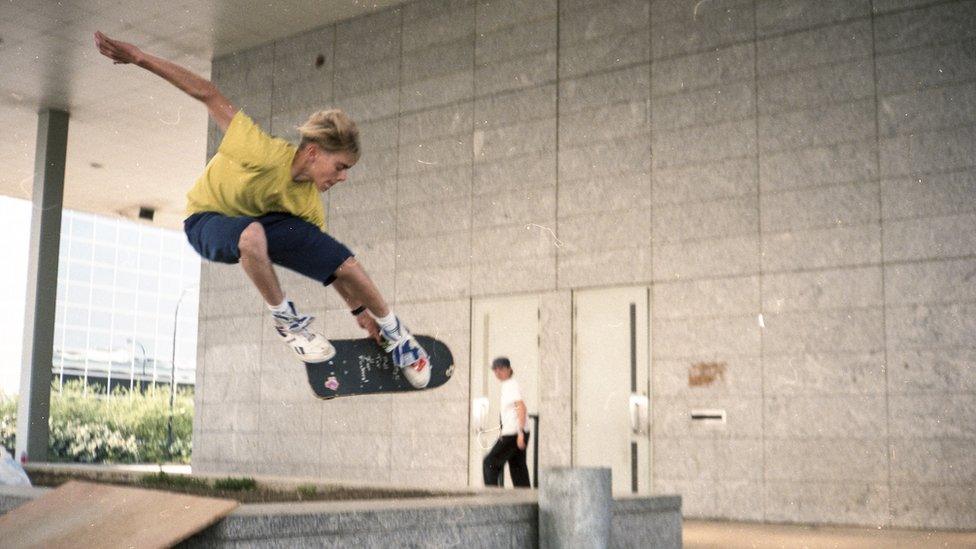
"When it was built there was nothing else like it," said Nathan Lindsell, one of the organisers. "It was US-influenced and built on a grid system, with smooth surfaces, granite and marble. The town planners were amazed at how the skateboarders used the architecture."
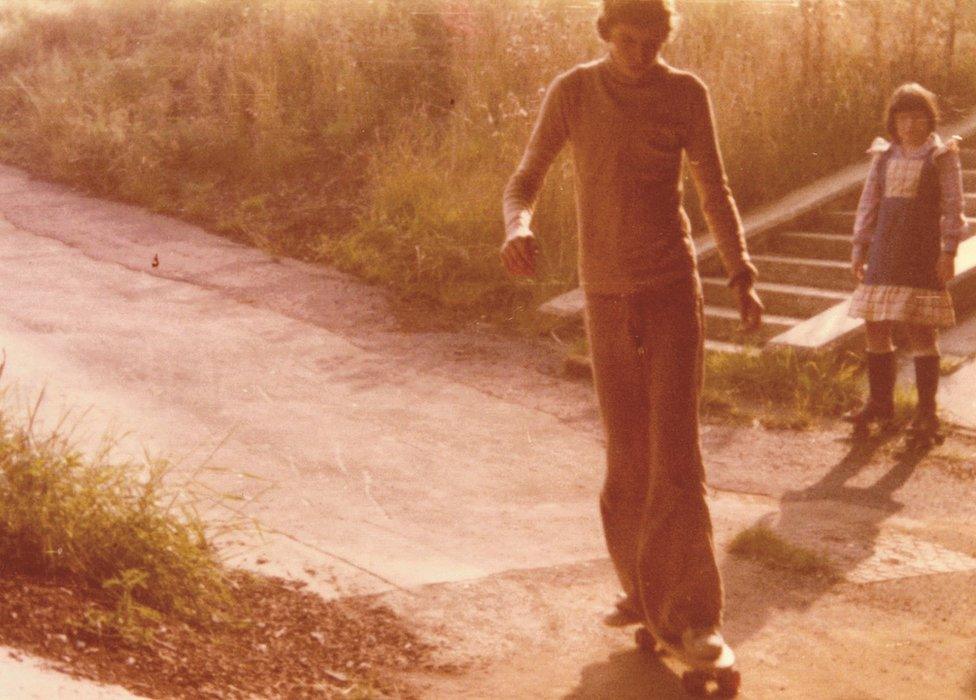
The exhibition will include photographs and videos documenting the rise of skateboarding from the 1970s onwards. "People are realising there's 40 years of history of it in Milton Keynes," said Mr Lindsell. "We want to show the influence it has had on British skateboarding."
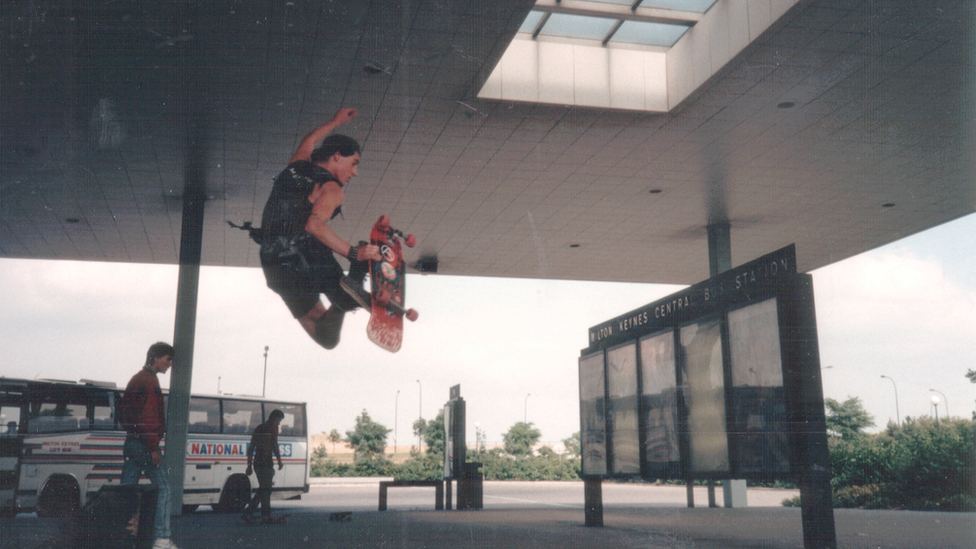
The central bus station was a popular meeting and skating point in the 1980s thanks to its large, smooth expanses, particularly on Sundays when shops were closed and skateboarders had the town to themselves

And while skaters' fashion trends changed, the bus station's popularity endured, as this 2007 shot by photographer Wig Worland proves

Skateboarders had to find their own spaces - such as this makeshift ramp in a storm drain in 1987 - but with the sport making its debut in the Tokyo 2020 Olympics, interest has never been higher, said Mr Lindsell
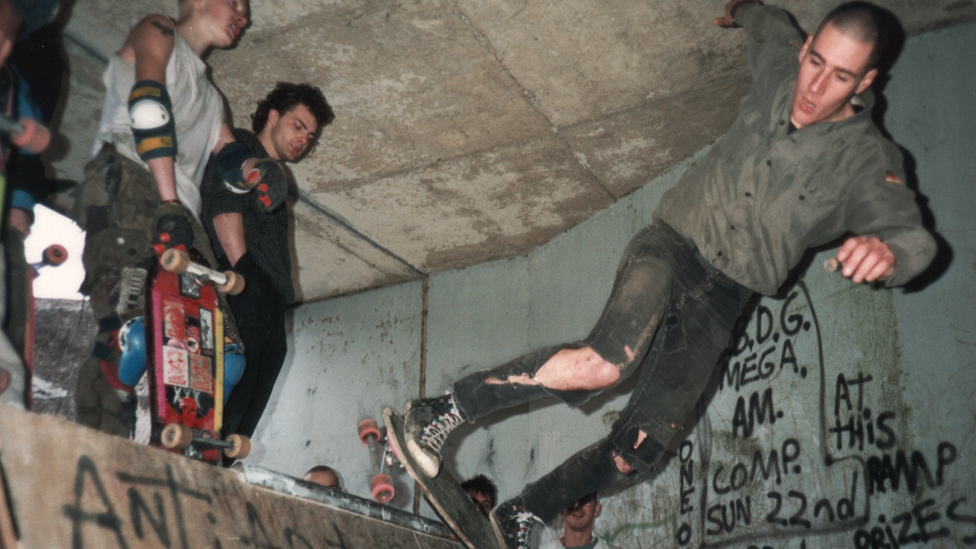
"It's about movement and dance, as opposed to sport - it's an expression of yourself," he said. "It's using what's around you: you become a living, moving element of the city."

Milton Keynes' urban architecture continued to prove a draw to skateboarders from all over the country, as shown by this shot of Oxfordshire skater Tom Watts from 2005, and helped develop the "street" style that dominates today's scene
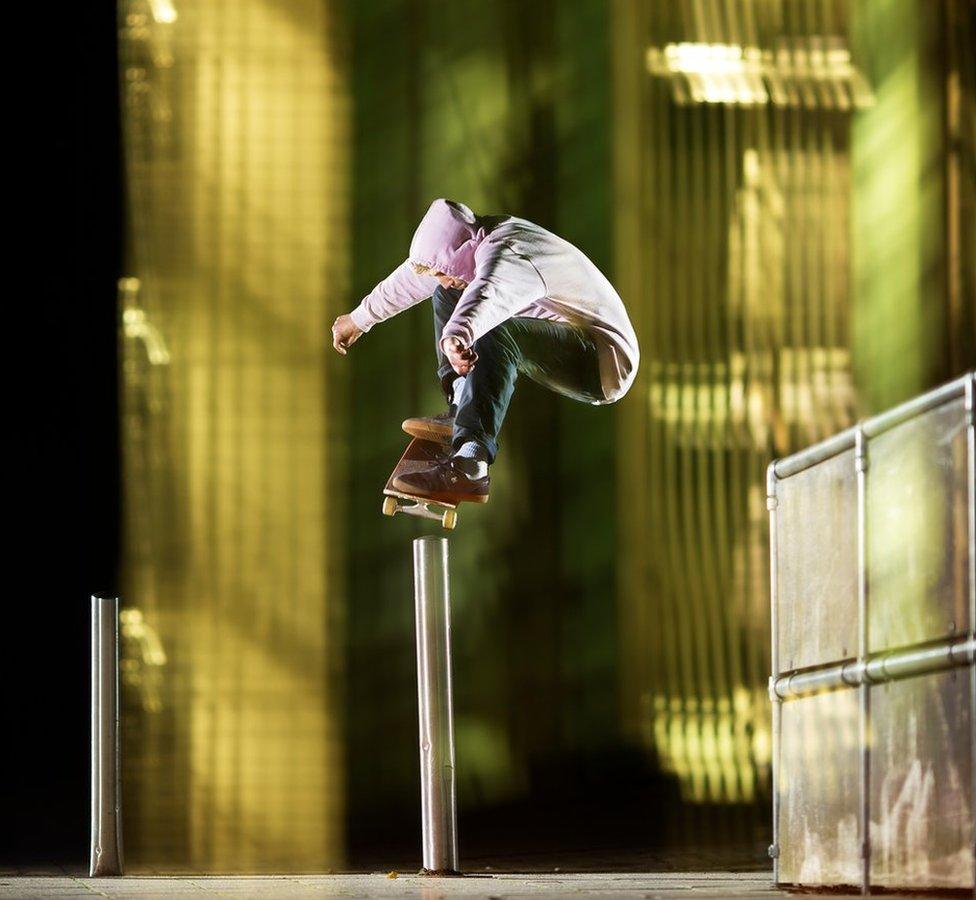
MK Skate organisers want to showcase the artistry and self-expression of the sport. One of its shining lights in 2019 is James Bush, rated "the current king of MK skateboarding" by photographer Leo Sharp
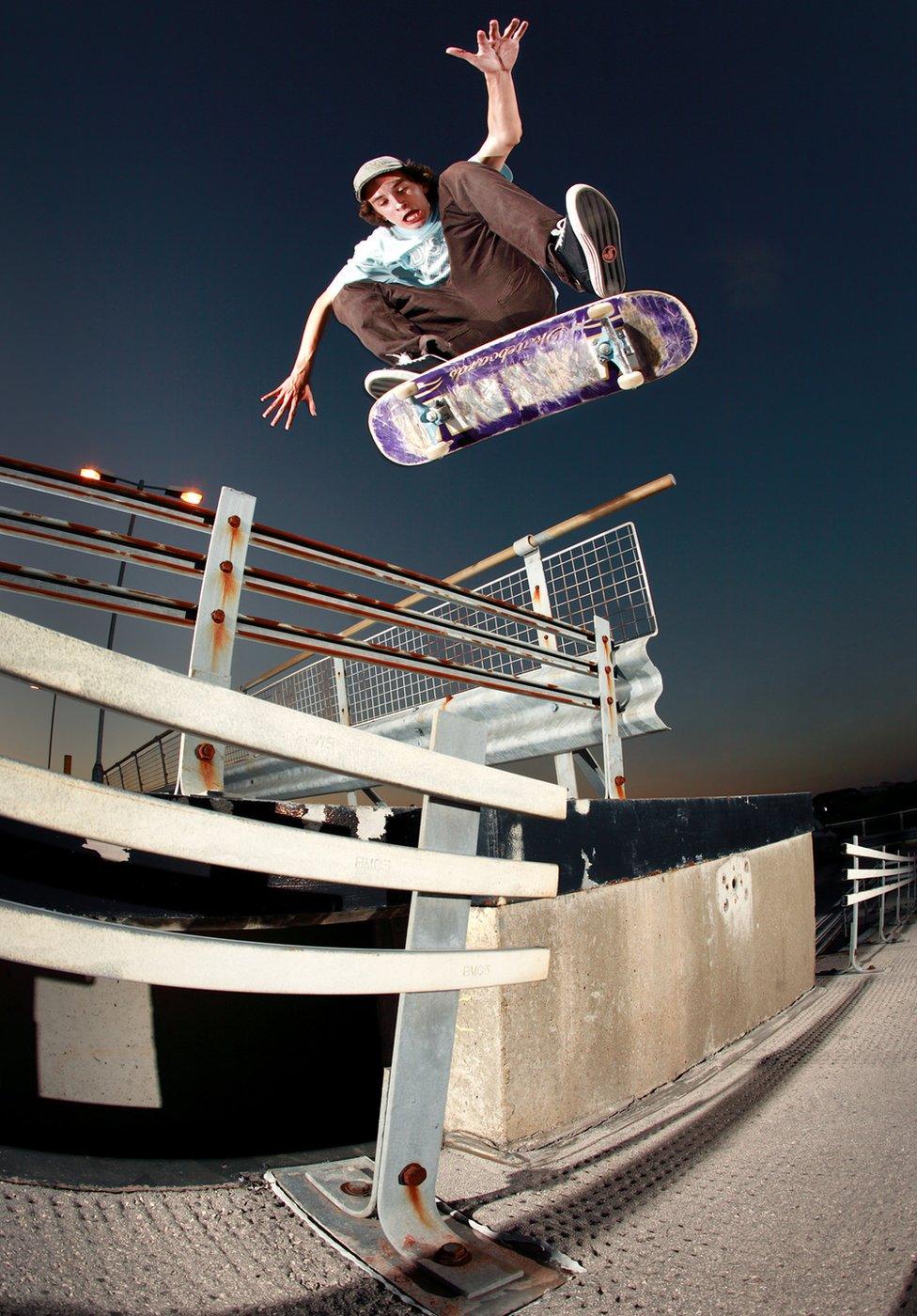
Leo Sharp also captured this image of a skateboarder performing a switch heelflip on top of the train station multi-storey car park in 2007
The exhibition runs until 6 January 2020.
- Attribution
- Published14 September 2019
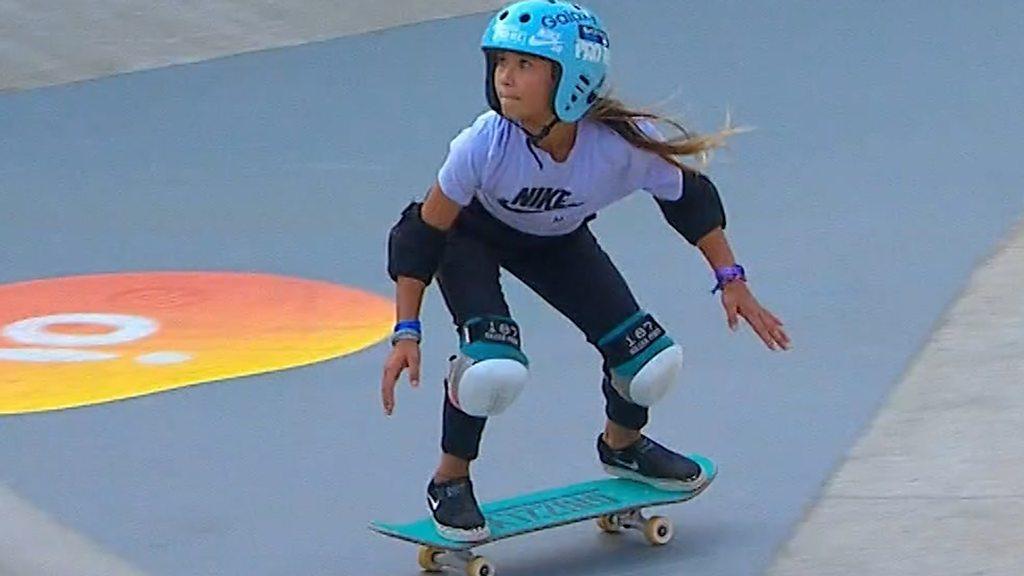
- Published18 June 2019
